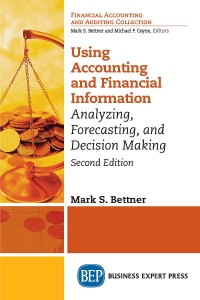Question
A company is considering investing in a new three-year (3-year) project. This project would manufacture and bring to market a new product called Pain Pod
A company is considering investing in a new three-year (3-year) project. This project would manufacture and bring to market a new product called Pain Pod for use by people with lower back pain. The product will sell for $10 for each unit, based on price values ($) in 2021.
The company has already spent $1 million on researching and developing the product and intends to start production and sales on 1 January 2022. The project will use part (50 per cent) of the companys existing factory building. This part of the factory building is currently being used on a project which will finish on 31 December 2021. The entire factory building is currently rented at a cost of $1 million annually as it has been for the past five (5) years, and this rent should not, at least in principle, increase over the life of the new project, although the rental agreement is to be reviewed by the factory owner on 31 December 2022. The new project will use existing equipment purchased on 1 January 2017 for $10 million. This equipment has already been fully depreciated with $zero residual value and has already benefited fully from taxation capital allowances. It is still in good working condition. (Assume annual taxation capital allowances are currently 25% on a reducing balance basis.) The new project will also require the purchase of a new piece of equipment in December 2021 for $12 million, with a useful production life of three (3) years, depreciated for accounting purposes on a straight-line basis, and with $1 million residual value on 31 December 2024, the end of its useful three-year (3-year) production life. The company anticipates being able to sell the rights to the manufacture and sales of the Pain Pod to another company in 2025 for $2 million, with the sale being concluded on 31 December 2025.
Projected annual sales are one (1) million units in each year of the projects three-year operational life.
Variable costs are budgeted to be $5 for each unit. The project, as with each of the companys projects, will receive an annual company overhead charge of $500,000 relating to the companys existing fixed overheads. The project is likely to result in the companys existing annual fixed overheads increasing by $1 million cash payments. The values for variable costs and incremental fixed overhead costs referred to immediately above are based on price values ($) in 2021.
Company taxation is 20% annually and is paid one year in arrears. (For ease of calculation assume that the 20% tax rate is applied to each annual figure ($) based on sales ($) minus variable costs ($) minus incremental fixed costs ($) associated with the project.)
The general annual inflation rate across the life of the project is forecast to be 5%. The sales price ($) of each unit is likely to be impacted by an annual inflation rate of 10% in each year. The variable cost ($) of each unit is likely to be impacted by an annual inflation rate of 10% in each of 2022 and 2023, after which the variable cost will stabilise. The incremental fixed overheads arising from the new project are likely to be impacted by an annual inflation rate of 10% in each year. The company is funded by a combination of ordinary shareholders equity, a fixed interest rate bank loan, and a semi-variable (floating rate) bank loan. Its weighted average cost of capital (WACC), as in November 2021 and unadjusted for inflation, is 9.5242% and will be impacted by the general inflation rate. (If adjusted for inflation, the resultant WACC applied for discounting purposes is rounded to the nearest whole % figure. For example, and for illustrative purposes only, 17.0098% would be rounded to 17%.) The company is aware that Painlands central bank is concerned about what it perceives to be a high rate of general inflation and is keeping a watchful eye on interest rates.
a) Detail the projects incremental cash flows (the relevant costs) associated with the proposed project overall and from those cash flows determine the net present value (NPV) of the project. Round all financial figures within your schedule to the nearest whole dollar ($). (35 marks) Please show calculations and use discount table included

Step by Step Solution
There are 3 Steps involved in it
Step: 1

Get Instant Access to Expert-Tailored Solutions
See step-by-step solutions with expert insights and AI powered tools for academic success
Step: 2

Step: 3

Ace Your Homework with AI
Get the answers you need in no time with our AI-driven, step-by-step assistance
Get Started


